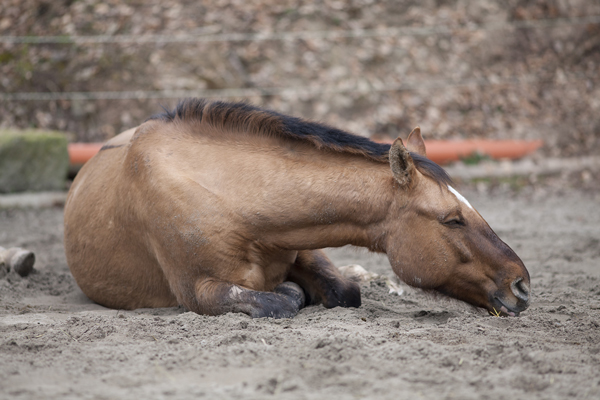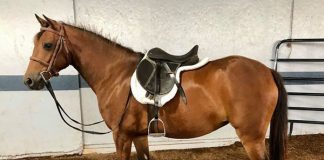
With many horses seeing their exercise schedules suddenly reduced or eliminated, questions have cropped up if this creates a higher risk of colic during the COVID-19 pandemic. The Canadian National Code of Practice for the Care and Handling of Equines is clear: Horses must have some form of exercise or turnout unless under stall rest for medical reasons or severe environmental conditions make this temporarily impossible. Equine Guelph encourages concerned horse owners and caretakers to assess their risk and adjust management practices to help reduce their chance of colic using a free online healthcare tool: The Colic Risk Rater.
“The COVID-19 epidemic is a public health emergency,” says Frederick. “All small businesses are taking a serious hit with this pandemic, including riding instructors and owners of boarding and lesson facilities. I’d like to address a few points that have cropped up on the internet.
“Yes, horses need exercise, but they will get by if not ridden by their owner that is complying with social distancing,” she continues. “Access to turnout, longeing, and handwalking are all options that can continue to be provided while restricting barn access to essential personnel only. If your barn is well run, there is NO reason your colic rates should go up.
“Barns, like any public institution, involve multiple people touching the same gates, stall latches, grooming tools, tack, brooms etc.” continues Frederick. “Leather tack is difficult to disinfect. Disease will spread in a barn just as it will in any social environment. It’s worth bearing in mind that the longer we fail to comply with social distancing recommendations, the more damage the virus can do, and this will deepen the already profound economic effects.”
High-grain, low-forage diets and sudden changes in diet are two of the top risk factors for equine colic, whether during COVID-19 or not.
If you have concerns about your horse, call or e-mail your equine veterinarian for advice.
Another important task during these difficult times is to stay in touch with your hay supplier to ensure a consistent supply. You don’t want to run so low that you lose the ability to implement safe periods from one batch of hay to the next.
Check your colic risk with the interactive Colic Risk Rater tool linked above, kindly sponsored by CapriCMW. And remember, riding is not the only way your horse can receive the benefits of exercise. Be safe everyone!
Equine Guelph is the horse owners’ and caregivers’ Centre at the University of Guelph in Canada. It is a unique partnership dedicated to the health and well-being of horses, supported and overseen by equine industry groups. Equine Guelph is the epicentre for academia, industry and government—for the good of the equine industry as a whole. For further information, visit www.equineguelph.ca.






